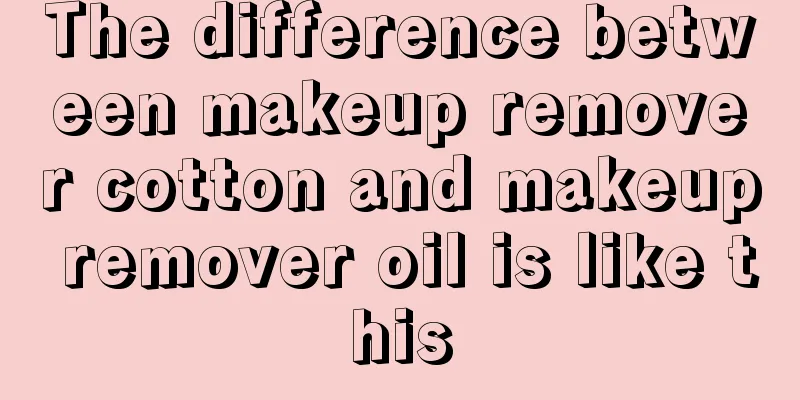What is the relationship between the five internal organs and beauty?

|
The five internal organs are the five organs in the human body, mainly the heart, lungs, spleen, liver and kidneys. Health experts often mention that the five internal organs are related to the patient's physical health and are also related to various diseases. The five internal organs of a healthy body are normal, but after a disease occurs, many serious hazards will occur. The patient's face will show abnormalities, such as dark yellow, black, thin, etc. After the abnormality is found, the body can be adjusted. So what is the relationship between the five internal organs and beauty? The various parts of the human body are centered on the five internal organs, and form an organic whole through the meridians, qi and blood, body fluids, the skin, five senses, hair, four limbs and nine orifices. From the perspective of Chinese medicine cosmetology, a person's appearance, demeanor, and even consciousness and body shape are all external reflections of the internal organs, meridians, qi and blood. When the internal organs have abundant qi and blood, the skin will be ruddy and lustrous, the muscles will be firm and plump, and the fur will be lush and moist. Therefore, Chinese cosmetology attaches great importance to the role of internal organs and qi and blood in beauty. It nourishes the five internal organs and replenishes qi and blood to make the body healthy and the face beautiful. The relationship between the five internal organs and beauty is briefly described as follows: 1. Heart: The physiological function of the heart is to control blood vessels and spirit, to connect the meridians in the body, to open up the tongue, and its beauty is on the face. The complexion of the face reflects the strength or weakness of the heart's qi and blood. Only when the heart is full of qi and blood can the complexion become rosy and radiant. If the heart blood is insufficient and the pulses are not full, the complexion will be pale and even withered; if the heart qi is insufficient and the blood cannot flow to nourish the heart, the complexion will be puffy and pale; if the blood circulation is not smooth and the blood vessels are stagnant, the complexion will be bluish purple and withered. 2. Lung: The physiological function of the lung is to control the breath, to disperse and descend, to connect with the skin in the body, to open up the orifice in the nose, and its beauty is in the hair. The lungs distribute qi, blood and body fluids to the skin hairs through their function of dispersing and promoting energy, thereby nourishing and regulating the opening and closing of sweat pores, regulating body temperature and resisting external pathogens. When the lung qi is abundant, the skin and fur are warmed and moisturized, the sweat pores open and close normally, the body temperature is moderate and is not invaded by external pathogens. If the lung qi is weak, the skin and hair will not be nourished, the sweat pores will not be regulated and will cause excessive or insufficient sweating, the body temperature will be out of control, and external pathogens will be easily invaded. 3. Spleen: The physiological functions of the spleen are to transport and transform, to regulate blood, to combine flesh in the body, to open up at the mouth, and its beauty is on the lips. The nutrition of muscles throughout the body depends on the spleen to distribute and produce nutrients. If the spleen is healthy, the body will be strong and healthy, with full muscles. If the spleen fails to function properly, muscles will become thin and the limbs will become tired. When the spleen is functioning well, the lips will be rosy and beautiful. If the spleen is not functioning well, qi and blood will be insufficient, causing the lips to be pale and dull. 4. Liver: The physiological function of the liver is to regulate the flow of qi, store blood, unite tendons in the body, open the eyes, and its beauty is in the nails. Tendons are attached to the joints. The expansion and contraction of tendons allow the joints throughout the body to move freely. Tendons must be nourished by liver blood to be strong and able to stretch and contract. If the liver blood is insufficient, the tendons will not be nourished, resulting in slow movement, inability to flex and extend, and even cramps and tremors. In severe cases, the nails will become dry, deformed, or even brittle. If the liver blood is abundant, the eyes will be bright and lively; if the liver blood is insufficient, the eyes will be dry and vision will be unclear; if the liver fire is inflamed, the eyes will be red and swollen; if the liver wind is moving inside, the eyes will be squinting or even drooping. 5. Kidney: The physiological function of kidney is to store essence, control water, combine bones in the body, open up the ears and two orifices, and its beauty is in the hair. Bones are the support of the human body. The growth, development, and repair of human bones all depend on the nourishment of kidney essence. If the kidney essence is sufficient, the bones will be strong, the limbs will be light and powerful, and the movements will be agile. If the kidney essence is insufficient, the bones will be underdeveloped or fragile and weak, the waist and back will be unable to bend or stretch, and the legs and feet will be weak and powerless. Teeth also need the nourishment of kidney essence to remain strong. If the kidney essence is insufficient, children's teeth will develop slowly and adults' teeth will become loose and easy to fall out. The human body's hair is the external manifestation of the kidneys. This is because kidney essence can transform into blood, and hair relies on nourishment from essence and blood. Therefore, the growth and loss, moisture and dryness, lushness and thinning, blackness and dry whiteness of hair are all related to kidney essence. If the kidney essence is sufficient, the hair will be lush and black; if the kidney essence is deficient, the hair will be dry, sparse, dry white, and fall out. What is the relationship between the five internal organs and beauty? The above article analyzes the relationship between the two, and at this time we can clearly judge the standards. When patients find that there is a problem with the five internal organs, they can be diagnosed according to the relevant symptoms, so as to find out more symptoms and determine the type of disease the patient suffers from. Of course, the patient cannot control the disease through cosmetic means at this time. A reasonable treatment plan must be formulated according to the symptoms so that there is hope of recovery. |
<<: The dangers of drinking hot water from a plastic cup
>>: What is the relationship between the five sense organs and the five internal organs?
Recommend
How does the skin excrete lead and mercury?
There are many toxins in the human body due to th...
What are the Chinese patent medicines for treating myocardial ischemia
The impact of myocardial ischemia is relatively l...
What is the reason for thick white coating at the root of the tongue?
If the thick white coating on the root of the ton...
Can an 86-year-old with bile duct cancer undergo surgery?
Whether an 86-year-old patient with cholangiocarc...
Traditional Chinese medicine prescription for gastric cancer
Chinese medicine prescription for gastric cancer ...
The difference between hydrochloric acid and sulfuric acid
When you hear the word sulfuric acid, you may thi...
How to heal blisters at the corners of mouth quickly
Having blisters at the corners of the mouth is a ...
7 common sense about chemotherapy for lymphoma
Chemotherapy is a commonly used auxiliary method ...
How to tell whether an egg is bad or not
The nutritional value of eggs is very high. We of...
Excessive sweating can easily cause hair loss
Hair has a close relationship with the body. If y...
Aflatoxin rapid test
Because aflatoxin is a carcinogen. Therefore, peo...
The efficacy and function of watermelon rind
With the development of technology, many things a...
What to do if you get heatstroke in summer? Four-word formula for first aid
In the summer, especially for workers working out...
Acne on the back and buttocks
Acne seems to be regardless of age, gender, seaso...
What are the causes of bone cancer
In recent years, bone cancer has become one of th...









